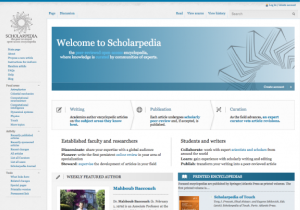 |
July 29, 2016 Volume 22, Number 29 |
Research and Education |
General Interest |
Network Tools |
In the News |
Research and EducationBack to Top | |
 |
|
 |
|
 |
|
 |
|
 |
|
 |
|
 |
|
 |
|
General InterestBack to Top | |
 |
|
 |
|
 |
|
 |
|
 |
|
 |
|
 |
|
 |
|
Network ToolsBack to Top | |
 |
|
 |
|
In the NewsBack to Top | |
To Make a Lichen, It Takes Three: Scientists Discover a Second Fungi in Lichen | |
|
Two's Company, Three's a Lichen? Lichen is a famous biological partnership, but it may actually be a threesome How a Guy from a Montana Trailer Park Overturned 150 Years of History Basidiomycete yeasts in the cortex of ascomycete macro-lichens Mix and Match Ecology: Symbiosis Lesson Plan USDA: Lichens For over a century, lichens have been considered a prime illustration of the concept of symbiosis, the result of a mutually beneficial partnership between fungi and algae. Algae undergoes photosynthesis and provides the lichen with food. Meanwhile, fungi provide the lichen with structure and protection, allowing the lichen to grow. Last week, a team of scientists, headed by biologist Toby Spribille, published a paper in Science that complicates this conventional understanding. Spribille teamed up with John McCutcheon to examine the differences between yellow lichens, which produces toxic vulpinic acid, and brown lichens, which do not produce this acid. In the process, the team discovered that in addition to ascomycetes - the kind of fungus long understood to be part of lichens - lichens also contained a second kind of yeast, basidiomycetes. Furthermore, the team discovered more basidiomycetes in yellow lichens. Thus, basidiomycetes may serve an important function in protecting lichens from vulpinic acid. This discovery opens up new insight - and questions - about both lichens and the very nature of symbiotic relationships. As Nick Talbot of the University of Exeter noted, "It makes lichens all the more remarkable. We now see that they require two different kinds of fungi and an algal species." [MMB] The first two links take readers to a New York Times piece by Steph Yin and a Washington Post article by Rachel Feltman that summarize this new discovery about lichens and the new questions that have resulted. Next, readers will find an engaging Atlantic article by Ed Yong, which provides fascinating details about the history of the study of lichens. Readers interested in reading Spribille and his team's study in full can do so via the fourth link. Next, middle school and high school educators may want to check out the fifth link, which takes readers to a lesson plan about symbiosis crafted by the University of North Carolina's school of education. Finally, visitors will find a page from the U.S. Department of Agriculture on lichens. This page that will be of interest to both educators and members of the general public and includes a photo gallery of lichens (that may help anyone looking to identify different kinds of lichen on their next hike) as well as information about lichen habitats and the anatomy of lichens (note that the newly discovered basidiomycetes fungi appear to be on the lichen's cortex). | |





